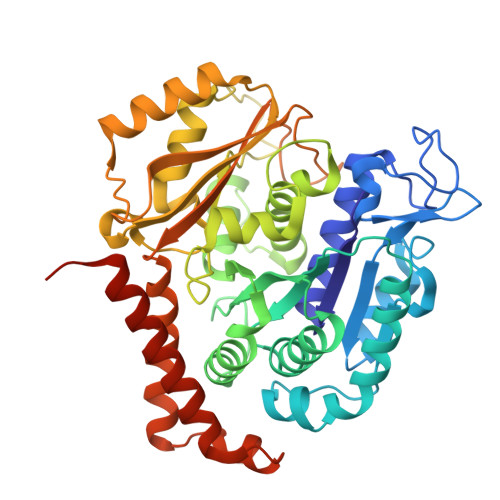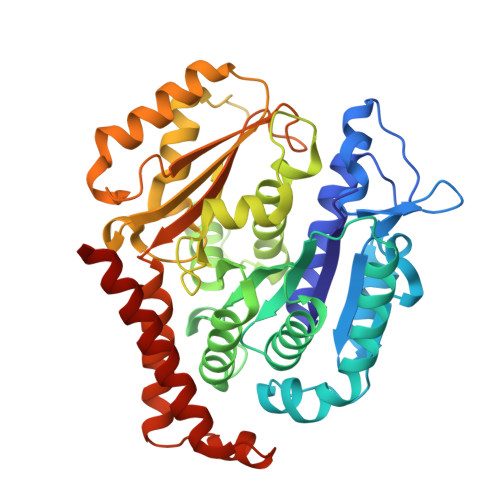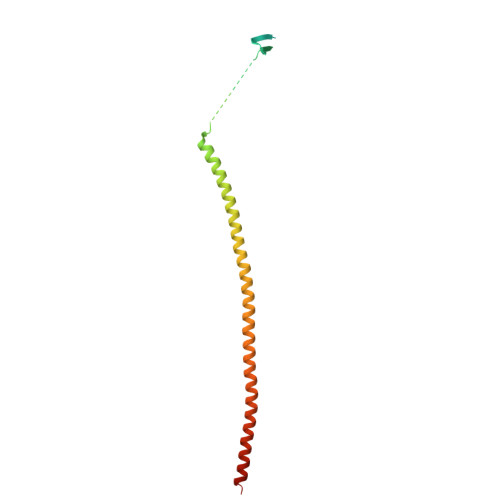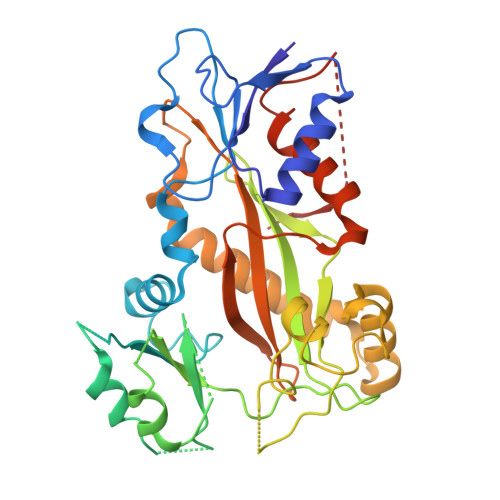Identification of a ligand-binding site on tubulin mediating the tubulin-RB3 interaction.
Li, Y., Zhang, C., Tang, D., Wang, T., Yan, W., Yang, L., Bai, P., Tang, M., Pei, H., Chen, L., Chen, Q., Yang, J.(2025) Proc Natl Acad Sci U S A 122: e2424098122-e2424098122
- PubMed: 40067895
- DOI: https://doi.org/10.1073/pnas.2424098122
- Primary Citation of Related Structures:
9IM5, 9IMO - PubMed Abstract:
For decades, microtubules-composed of ¦Á¦Â-tubulin dimers-have been primary targets for cancer chemotherapy. While eight binding sites on the tubulin dimer have been structurally characterized, this study reveals a ninth. We found that the tubulin inhibitor Tumabulin-1 (TM1, a BML284 derivative) binds simultaneously to the well-known colchicine site and a previously unknown site, designated as Tumabulin site. This site resides at the interface of ¦Á1-tubulin, ¦Â1-tubulin, and RB3 within the tubulin-RB3-tubulintyrosine ligase complex. Remarkably, two TM1 molecules bind cooperatively to this relatively large pocket, interacting with all three proteins. Crucially, this binding is dependent on RB3; it is absent when RB3 is missing or the key residue H71 is mutated (H71Q). We further designed and synthesized Tumabulin-2 (TM2) that selectively binds the Tumabulin site, excluding binding the colchicine site. TM2 acts as a molecular glue, strengthening the interaction between RB3 and the tubulin dimer and consequently enhancing RB3's tubulin-depolymerizing activity. In conclusion, our findings confirm the existence of a ninth tubulin-binding site and offer a promising foundation for developing Tubulin-RB3 molecular glues as a next generation of anticancer therapeutics.
Organizational Affiliation:
Innovation Center of Nursing Research, Nursing Key Laboratory of Sichuan Province, State Key Laboratory of Biotherapy and Cancer Center, West China Hospital, and Collaborative Innovation Center of Biotherapy, Sichuan University, Chengdu, Sichuan 610041, China.

























